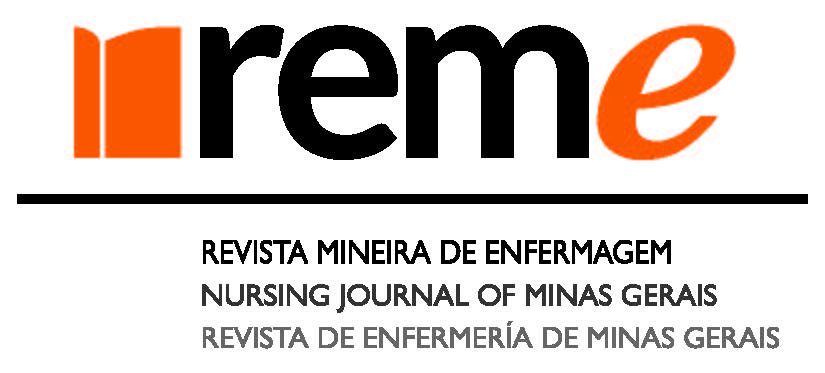Reflection on safety culture and the novice to expert theory in the surgical setting
DOI:
https://doi.org/10.35699/2316-9389.2024.46436Keywords:
Organizational Culture, Surgicenters, Patient Safety, Nursing Theory, Problem-Based LearningAbstract
This study aims to reflect on the safety culture and Benner's nursing theory. It consists of a reflective analysis of professional experience as a contributing element to the development of a safety culture in the surgical environment. In this context, it is highlighted that the novice to expert theory has significant implications for safety culture, recognizing the importance of continuous training, critical reflection, and staff's individual and collective responsibility in the provision of safe patient care. In addition, it identifies the impact that professional maturity has on the development of a culture of safety in the operating room. This reflection encourages nurses, managers and other health professionals working in the surgical environment to understand the importance of professional skills in improving the safety culture, emphasizing the value of professional experience and promoting its development through incentive programs that integrate skills and knowledge acquired through experience.
Downloads
References
World Health Organization. Patient safety incident reporting and learning systems: technical report and guidance. 2021[citado em 2023 abr. 3]. Disponível em: https://www.who.int/publications/i/item/9789240010338
Azevedo ARR, Fassarella CS, Lourenção DCA, Camerini FG, Henrique DM, Silva RFA. Safety climate in the surgical center during the Covid-19 pandemic: mixed-method study. BMC Enferm [Internet]. 2023 [citado em 2024 abr. 8];22(197). Disponível em: https://doi.org/10.1186/s12912-023-01358-x
Carvalho PA, Amorim FF, Casulari LA, Gottems LBD. Safety culture in the perception of public-hospital health professionals. Rev Saúde Pública [Internet]. 2021 [citado em 2024 abr. 8];55:56. Disponível em: https://doi.org/10.11606/s1518-8787.2021055002838.
Malinowska-Lipień I, Micek A, Gabrys T, Kózka M, Gajda K, Gniadek A, et al. Nurses and physicians’ attitudes towards factors related to hospitalized patient safety. PLoS One [Internet]. 2020 [citado em 2023 abr. 20];16(12):e0260926. Disponível em: https://doi.org/10.1371/journal.pone.0260926
Liao X, Zhang P, Xu X, Zheng D, Wang J, Li Y, et al. Analysis of Factors Influencing Safety Attitudes of Operating Room Nurses and Their Cognition and Attitudes toward Adverse Event Reporting. J Healthc En. [Internet]. 2022 [citado em 2023 abr. 25];8315511. Disponível em: https://doi.org/10.1155/2022/8315511
Nyberg A, Olofsson B, Fagerdahl A, Haney M, Otten V. Longer work experience and age associated with safety attitudes in operating room nurses: an online cross-sectional study. BMJ Open Quality [internet]. 2024 [citado em 2024 abr. 12];13:2182. Disponível em: https://doi.org/10.1136/bmjoq-2022-002182
The Joint Commission. Sentinel Event Data 2022 Annual Review. 2023 [citado em 2024 abr. 13]. Disponível em: https://www.jointcommission.org/-/media/tjc/documents/resources/patient-safety-topics/sentinel-event/03162023_sentinel-event-_annual-review_final.pdf
Organização Mundial da Saúde. Segundo desafio global para a segurança do paciente: Cirurgias seguras salvam vidas (orientações para cirurgia segura da OMS). 2009 [citado em 2023 abr. 3]. 1–211 p. Disponível em: https://bvsms.saude.gov.br/bvs/publicacoes/seguranca_paciente_cirurgias_seguras_salvam_vidas.pdf
World Health Organization. Global Patient Safety Action Plan 2021-2030: towards eliminating avoidable harm in health care. 202 [citado em 2023 abr. 10]. Disponível em: https://www.who.int/teams/integrated-health-services/patient-safety/policy/global-patient-safety-action-plan
Oliveira Junior NJ, Lourenção DCA, Poveda VB, Riboldi CO, Martins FZ, Magalhães AMM. Safety culture in surgical centers from the perspective of the multiprofessional team. Rev Rene [Internet]. 2022 [citado em 2023 abr. 14];23:e78412. Disponível em: https://doi.org/10.15253/2175-6783.20222378412
Bass EJ, Hose BZ. Perioperative Environment Safety Culture: A Scoping Review Addressing Safety Culture, Climate, Enacting Behaviors, and Enabling Factors. Anesthesiol Clin [Internet]. 2023 [citado em 2023 abr. 14];41(4):755-73. Disponível em: https://doi.org/10.1016/J.ANCLIN.2023.06.004.
Benner P. Using the Dreyfus Model of skill acquisition to describe and interpret skill acquisition and clinical judgment in nursing practice and education. Bull Sci Technol Soc [Internet] 2004 [citado em 2023 abr. 15];24:188–99. Disponível em: https://doi.org/10.1177/0270467604265061
Calazans MSC, Bitencourt JVOV, Lima EFA, Portugal FB. Segurança do paciente: perspectiva dos acadêmicos de enfermagem. Rev Enferm Atual In Derme [Internet]. 2023 [citado em 2024 abr. 25];97(1):e023029. Disponível em: https://revistaenfermagematual.com.br/index.php/revista/article/view/1593
Hudson P. Applying the lessons of high risk industries to health care. Qual Saf Health Care [Internet]. 2003 [citado em 2023 abr. 25];12(Suppl 1):i7–12. Disponível em: https://doi.org/10.1136%2Fqhc.12.suppl_1.i7
Eriksson J, Lindgren BM, Lindahl E. Newly trained operating room nurses' experiences of nursing care in the operating room. Scand J Caring Sci [Internet]. 2020 [citado em 2024 abr. 25];34: 1074-82. Disponível em: https://doi.org/10.1111/scs.12817
Additional Files
Published
Issue
Section
License
Copyright (c) 2024 REME-Revista Mineira de Enfermagem

This work is licensed under a Creative Commons Attribution 4.0 International License.





































